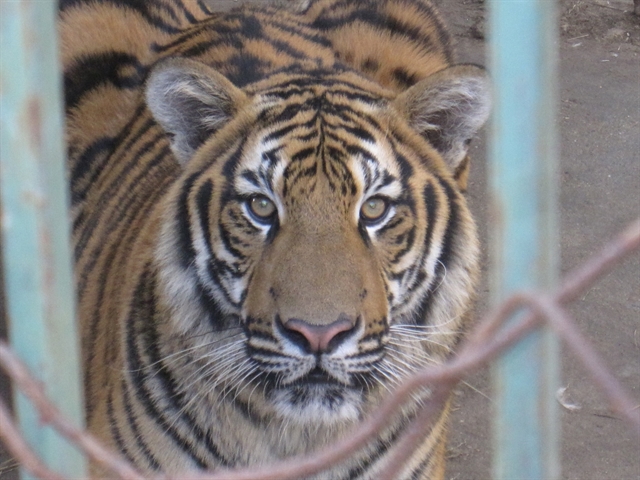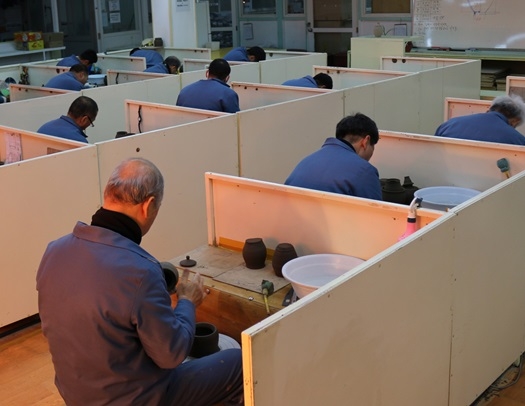 Environment
Environment

 |
| A tiger is bred in a private farm in Việt Nam. Việt Nam confirmed its strong commitment to save tigers and the country's responsibility for biodiversity conservation. Photo courtesy of WWF-Vietnam |
PARO, BHUTAN – Việt Nam confirmed its strong commitment to protect tigers and the country's responsibility for biodiversity conservation in general and tigers in particular, within the framework of CITES conventions, the Kunming-Montreal Global Biodiversity Framework to prevent and reverse biodiversity loss and meet the United Nations Development Goals (UNDGs).
Vice Minister of Agriculture and Rural Development, Nguyễn Quốc Trị, spoke at the ‘Sustainable Finance for Tiger Landscape’ Conference in Bhutan with the participation of leaders of thirteen tiger range countries.
The conference, which was hosted by the Royal Government of Bhutan, under the Royal patronage of H.E. the Queen of Bhutan, Jetsun Pema Wangchuck, aimed to secure significant international support for a range-wide tiger recovery plan that ties into national and global agendas on climate, biodiversity and the One Health Programme.
“Việt Nam, together with other countries, are taking actions to protect the tigers, its prey and phase out tiger farms that are not for conservation,” Trị said.
“Việt Nam is joining to discuss with leaders from range countries and international organisations to further advance tiger conservation efforts globally,” he added.
Even though tigers have not been recorded in the wild in Việt Nam since 2000, Việt Nam has issued a ban on trading wild tiger products. Illegal hunting, trading and farming is prosecuted according to the 2017 Penal Code. A national action on tiger conservation (2014-2022) was also launched to protect the species.
However, there are still factors that challenge the impact of these programmes including the high demand for tiger products; law enforcement capacity; lack of scientific study for tiger landscape recovery; the intricate web of trading online and offline; and tiger breeding facilities. These factors have driven tigers to the brink of extinction.
Tigers are one of the few species whose survival and recovery are so thoroughly intertwined with many of societies’ greatest challenges, including biodiversity decline, development and health concerns.
They are deeply embedded in the culture and beliefs of many countries - a symbol of strength, good luck and power. But in just over a century, the wild tiger population globally has suffered a devastating decline, losing around 97 per cent of their historic range.
 |
| Vice Minister of Agriculture and Rural Development, Nguyễn Quốc Trị (centre) joins the ‘Sustainable Finance for Tiger Landscape’ Conference in Bhutan with the participation of leaders of thirteen tiger range countries. Photo courtesy of WWF-Vietnam |
In 2010, their population was approximately 3,200. Over the last twelve years, WWF’s Tiger Alive Initiative, was a major force to drive socio-political change for tiger conservation. Significant progress has been made to conserve this iconic species, with their population globally having increased to 4,500 tigers remaining in the wild, in the latest estimation. However, despite efforts, their habitat continues to decline, limiting them to less than 3 per cent of their historic range, according to a recent Tiger Conservation Landscape Assessment.
Văn Ngọc Thịnh, CEO of WWF-Việt Nam, said: “The conference is a great opportunity for Việt Nam to learn from other countries on tiger conservation, especially on tiger reintroduction and captive tiger management; explore potential collaboration; and mobilise financial resources to replicate successful models shared in the conference. WWF will continue to support Việt Nam financially and technically in the rehabilitation of wild tiger population.”
During the three-day conference, the vice minister also joined meetings with the highest level leaders of WWF to discuss the current and future collaboration between WWF and the ministry.
The two sides are keen on working together to gradually phase out tiger facilities with no conservation objectives and build the Central Annamites as a landscape model that can replicate the Bhutan for Life programme in Việt Nam as Việt Nam for Life.
The conference was supported by the Tiger Conversation Coalition, which includes several leading conservation organisations including the Environmental Investigation Agency (EIA), Fauna & Flora International (FFI), International Union for Conservation of Nature (IUCN), Natural State, Panthera, TRAFFIC, United Nations Development Programme (UNDP), Wildlife Conservation Society (WCS), World Wide Fund for Nature (WWF), and the Zoological Society of London (ZSL). It hopes to push for a renewed focus on tiger conservation, seeking greater financial commitments from the global community to ramp up conservation efforts significantly beyond just tiger recovery.
Việt Nam launched a nationwide tiger management system with individual DNA profiles and stripe patterns, providing rules for keeping and breeding tigers for conservation purposes, and ensuring husbandry and welfare standards for captive tigers.
The plan was hosted by the Forest Protection Department (FPD) and supported by the US Agency for International Development (USAID) through the Saving Threatened Wildlife project, implemented by the Management Board for Forestry Projects (MBFP) of the Ministry of Agriculture and Rural Development (MARD), and WWF.
According to FPD, approximately 388 tigers are kept in zoos, safaris and under private ownership. In 2020, the Prime Minister assigned MARD to organise an assessment of the pilot programme and the status of the five private facilities allowed to keep/breed tigers for conservation purposes. Based on these assessments, the development of a National Framework for the Management of Captive Tigers has been proposed. VNS




